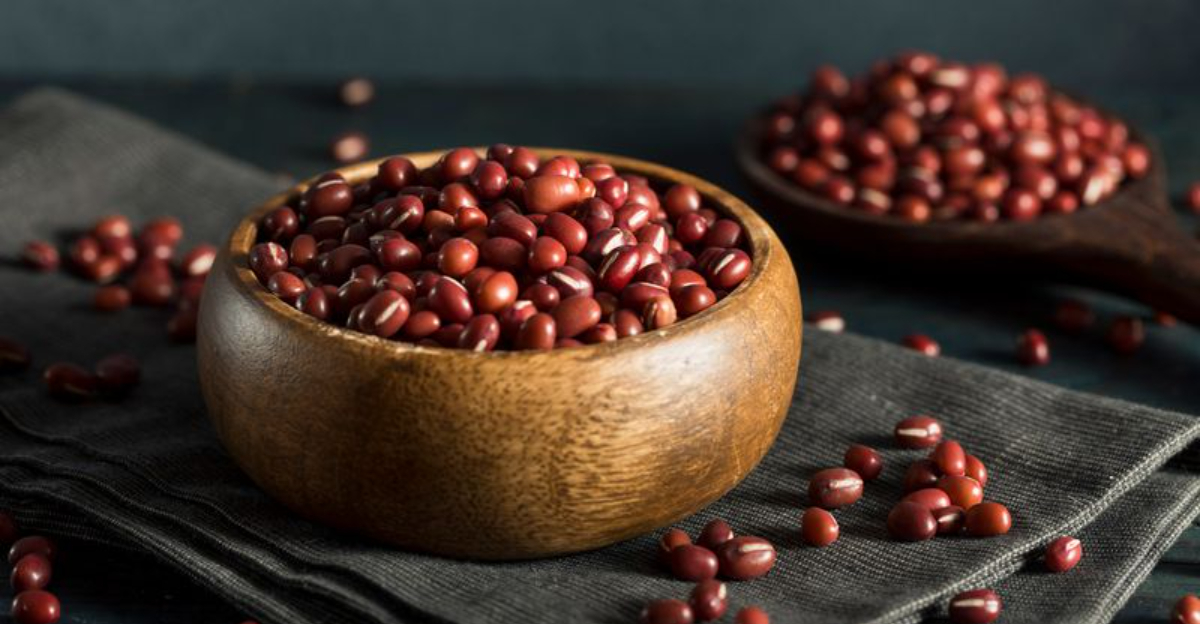20 Healthy Beans, Ranked From Least To Most Nutritious

Beans are tiny powerhouses packed with protein, fiber, and a whole lot of goodness. But not all beans are created equal when it comes to nutrition.
Some quietly sneak in extra vitamins and minerals, while others keep things simple but satisfying.
Whether you’re a bean believer or just curious, ranking these legumes from least to most nutritious reveals surprising winners that can boost any meal from average to amazing with their wholesome benefits.
1. Lupini Beans
Commonly spotted in Mediterranean and Latin American cuisine, lupini beans have a distinctive yellow color and slightly bitter taste.
These unique legumes require extensive soaking to remove alkaloids that can make them toxic when improperly prepared.
While not nutritional superstars compared to other beans, they still offer decent protein content and fiber. Their firm texture makes them perfect for snacking, especially when marinated with herbs and olive oil.
2. Mung Beans
Tiny green powerhouses that sprout into those crunchy bean sprouts you find in stir-fries!
Mung beans might rank lower on our list, but don’t let that fool you – they’re still nutritional gems with respectable amounts of protein and fiber.
Popular throughout Asia for centuries, these beans cook quickly without pre-soaking. Their mild, slightly sweet flavor makes them perfect for both savory dishes and sweet desserts in many Asian cuisines.
3. Adzuki Beans
Sweet little red beans that Japanese and Chinese dessert lovers adore! Adzuki beans contain fewer calories than many other beans while still providing decent nutrition.
Their natural sweetness makes them perfect for desserts like red bean paste in mochi. Packed with folate and magnesium, these beans support heart health despite their modest ranking.
When cooked, they develop a rich, nutty flavor that works wonderfully in both sweet and savory applications.
4. Black-Eyed Peas
Lucky New Year’s tradition or everyday superfood? Black-eyed peas earn their distinctive name from the black spot on their creamy white surface.
Their earthy flavor and quick cooking time make them a southern staple. Nutritionally, they offer decent protein but less fiber than higher-ranked beans.
Rich in folate and iron, they support healthy blood cells and metabolism. Southern tradition says eating them on January 1st brings good fortune throughout the year!
5. Lima Beans
Childhood nightmare or nutritional dream? These buttery, starchy beans might have been pushed around your plate as a kid, but lima beans deserve another chance!
Their creamy texture works beautifully in soups and succotash. Nutritionally, they provide good amounts of potassium and magnesium for heart health.
Lima beans contain moderate protein levels compared to other varieties. Fresh from the pod, they taste sweeter and more delicate than their dried counterparts.
6. Great Northern Beans
Mild-mannered heroes of the bean world! Great Northern beans might not have flashy colors or bold flavors, but their subtle nuttiness and smooth texture make them incredibly versatile kitchen staples.
These medium-sized white beans absorb flavors beautifully in soups and stews. Nutritionally, they offer respectable amounts of iron, magnesium and folate.
Their delicate flavor won’t overpower other ingredients, making them perfect for everything from Italian pasta e fagioli to classic baked beans.
7. Cannellini Beans
Italian cuisine’s secret weapon! Cannellini beans bring their smooth, creamy texture to countless Mediterranean dishes.
These elegant white kidney beans maintain their shape when cooked yet become tender enough to melt in your mouth.
Nutritionally, they provide solid amounts of protein and fiber. Their mild flavor absorbs surrounding ingredients beautifully.
Toss them in salads, blend them into dips, or add them to soups for an instant protein boost without overwhelming other flavors.
8. Navy Beans
Named for their role as a staple food in the U.S. Navy since the 1800s, these small white beans are nutritional workhorses!
Navy beans pack impressive fiber content that supports digestive health and helps maintain steady blood sugar levels.
Their mild flavor and tendency to break down during cooking makes them perfect for creamy soups and dips. Classic baked beans typically feature this variety.
Despite their modest appearance, navy beans contain respectable amounts of folate and manganese for cellular health.
9. Fava Beans
Ancient Egyptians adored them, and Mediterranean cooks can’t live without them! Fava beans (also called broad beans) have been cultivated for thousands of years for good reason.
Their distinctive earthy, slightly bitter flavor and buttery texture make them culinary treasures. Fresh favas require double-shelling but reward you with bright green, protein-rich beans.
They contain L-dopa, a compound that supports brain health. Spring menus celebrate these seasonal gems in everything from salads to purées.
10. Pinto Beans
Refried bean lovers rejoice! These speckled beauties transform from pretty pink-streaked beans to solid brown when cooked.
Pinto beans reign supreme in Mexican cuisine, where their creamy texture and earthy flavor shine in countless dishes.
Nutritionally, they provide excellent fiber and decent protein. Their high folate content supports heart health and cell production.
When mashed, they develop a rich, buttery quality that makes them perfect for dips, burritos, and as a base for hearty meals.
11. Soybeans
Versatility champions of the bean world! Soybeans transform into everything from tofu to tempeh, soy milk to miso.
Unlike most beans, they provide complete protein with all essential amino acids, making them nutritional superstars for plant-based diets.
Their neutral flavor makes them perfect chameleons in countless recipes. Beyond protein, soybeans offer omega-3 fatty acids and isoflavones that may support heart health.
While controversial in some circles, moderate soybean consumption has been part of traditional Asian diets for centuries.
12. Cranberry Beans
Fashion models of the bean world! Cranberry beans (also called borlotti or romano beans) sport gorgeous pink and cream speckled patterns before cooking.
Their nutty, chestnut-like flavor has made them Italian cuisine favorites for generations. These medium-sized beans maintain their shape well when cooked.
Nutritionally, they offer impressive amounts of fiber, protein, and minerals like iron and magnesium. Their rich flavor and creamy texture make them perfect for pasta fagioli and hearty Italian soups.
13. White Kidney Beans
Elegant and mild-mannered, white kidney beans bring their subtle flavor and firm texture to countless Mediterranean dishes.
Unlike their red cousins, they maintain their shape beautifully when cooked, making them perfect for salads and stews. Nutritionally, they offer substantial fiber and protein.
Their smooth, creamy interior absorbs surrounding flavors while their firm exterior provides satisfying texture.
Italian minestrone wouldn’t be the same without these beans adding heartiness and nutrition to the famous soup.
14. Yellow Split Peas
Sunshine in a bowl! Yellow split peas might not technically be beans, but these legume cousins deserve their spot on our list.
Their naturally sweet flavor and creamy texture make incredible soups and dals that comfort body and soul.
Packed with protein and fiber, they keep you full for hours.
Their bright color comes from natural carotenoids that support eye health.
When cooked, they break down completely, creating velvety textures perfect for thick, hearty dishes popular in Scandinavian, Middle Eastern, and Indian cuisines.
15. Red Kidney Beans
Bold, beautiful, and packed with antioxidants! Red kidney beans get their rich color from anthocyanins – the same compounds found in berries and red wine.
Their robust flavor and firm texture make them chili champions. These nutritional powerhouses contain impressive amounts of protein, fiber, and iron.
One important safety note: they must be properly cooked to neutralize a toxin present in raw beans. A staple in cuisines worldwide, from Louisiana red beans and rice to Indian rajma.
16. Green Peas
Sweet little spheres of nutrition! Fresh green peas burst with springtime flavor and impressive nutritional credentials.
While technically legumes rather than beans, these bright green gems deserve recognition for their exceptional vitamin and mineral content.
Packed with vitamins A, C, and K plus plant protein, they support everything from immunity to bone health.
Their natural sweetness makes them kid-friendly nutrition boosters. From the garden to your plate in minutes, fresh peas represent seasonal eating at its finest.
17. Lentils
Quick-cooking nutrition champions! Lentils might be tiny, but they pack massive nutritional benefits into their small packages.
Available in multiple varieties (green, brown, red, black), each offers slightly different flavors and textures for countless culinary applications.
Their impressive protein and iron content makes them vegetarian diet superstars.
Unlike beans, lentils don’t require soaking and cook in just 15-20 minutes. From Indian dal to French lentil salads, these versatile legumes have sustained civilizations for thousands of years.
18. Garbanzo Beans (Chickpeas)
Hummus heroes and salad superstars! Garbanzo beans (chickpeas) boast a nutty flavor and versatility that’s hard to beat.
Their firm texture holds up beautifully in salads while they blend into creamy perfection for dips and spreads.
Nutritionally outstanding, they provide significant protein, fiber, and minerals. The liquid from canned chickpeas (aquafaba) even works as an egg white substitute in vegan cooking!
From Indian chana masala to Mediterranean falafel, these beans have supported healthy diets across continents for thousands of years.
19. Black Beans
Latin American treasures with show-stopping nutrition! Black beans combine their dramatic color with exceptional health benefits, including the highest antioxidant content among beans.
Their slightly sweet flavor with subtle earthiness makes them culinary stars. Packed with protein, fiber, and minerals, they support everything from heart health to digestion.
Their midnight color comes from anthocyanins – powerful plant compounds that fight inflammation. From Brazilian feijoada to Cuban black beans and rice, these beauties form the backbone of countless beloved dishes.
20. Edamame
Vibrant green snacking sensation! Edamame are young soybeans harvested before they harden, creating a uniquely sweet, grassy flavor profile unlike any mature bean.
Popular in Japanese restaurants, these beans come in their pods for fun, interactive eating.
Nutritionally, they’re superstars – offering complete protein with all essential amino acids, omega-3 fatty acids, and fiber.
Their bright color indicates high chlorophyll content and antioxidants. Simply steamed with sea salt, they make perfect protein-packed snacks that even kids enjoy!
